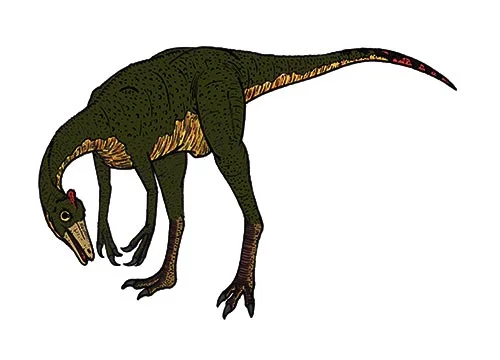Pelicanimimus (pelican mimic)

pel-e-kan-i-mim-us
Pérez-Moreno, Sanz, Buscalioni, Moratalla, Ortega and Rasskin-Gutman - 1994
Carnivore
Estimated 2.5 meters long
Small Theropod
polyodon (type)
Spain
Late Cretaceous, 70-66 million years ago
Pelicanimimus Facts
Pelicanimimus, whose name means “pelican mimic,” was a genus of ornithomimid dinosaur that lived during the Late Cretaceous period, about 70-66 million years ago, in what is now Spain. It was first discovered in the late 1990s and was described in 2006.
Pelicanimimus was a relatively small dinosaur, measuring about 2.5 meters (8 feet) in length and weighing around 40 kilograms (88 pounds). Like other ornithomimids, it had a toothless beak, long slender arms with three-fingered hands, and long legs. Its body was covered in feathers, which were likely used for insulation and possibly for display purposes.
The name “pelican mimic” comes from the shape of the dinosaur’s lower jaw, which resembles the bill of a pelican. It is believed that this unique shape may have evolved to help Pelicanimimus catch and filter small aquatic prey, such as fish and crustaceans, from shallow bodies of water. However, the exact diet of this dinosaur is still not well understood.
Pelicanimimus is important because it is one of the few ornithomimids known from the Late Cretaceous period, and one of the few dinosaur species known from the Late Cretaceous of Europe. Its discovery has helped paleontologists gain a better understanding of the evolutionary history of ornithomimids and the dinosaur fauna of Late Cretaceous Europe.



